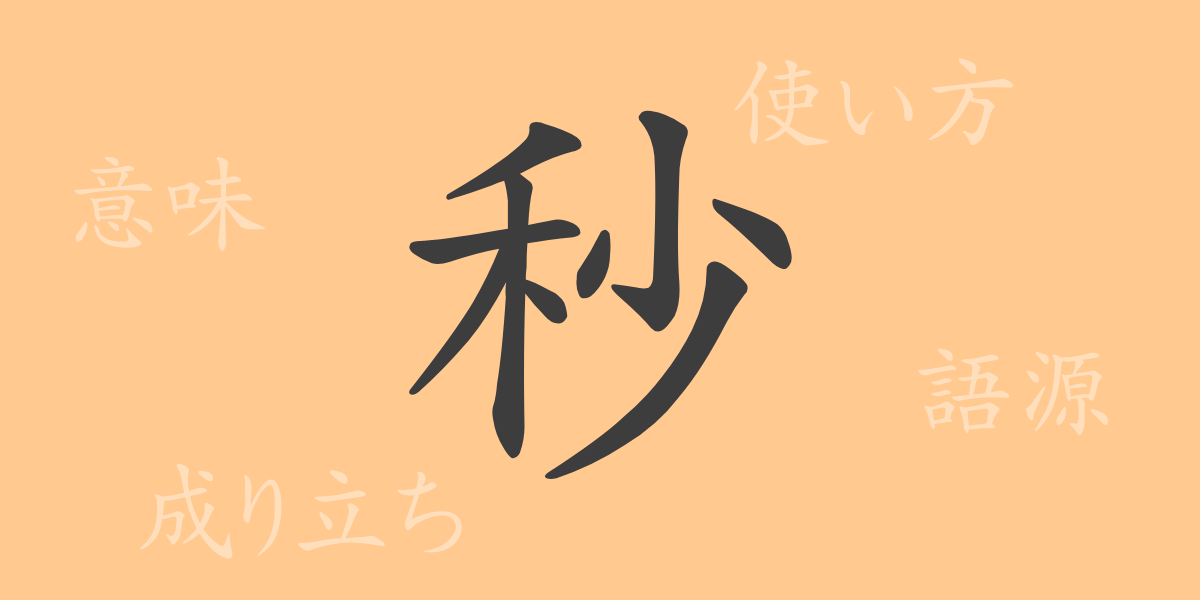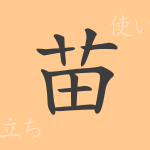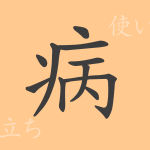The passage of time never stops, playing a crucial role in our daily lives. To capture fleeting moments, we use the unit of “seconds” (びょう, byou). In this article, we delve into the origins of the 常用漢字 (じょうようかんじ, jouyoukanji) “秒” (びょう, byou), its modern usage, and its presence in idioms and expressions. We explore how this small unit of time, “秒” (びょう, byou), has seamlessly integrated into our language and culture.
The Origin of “秒” (びょう, byou)
The character “秒” (びょう, byou) originated in ancient China as a unit for measuring time. It was derived from “少” (しょう, shou), meaning “a short amount of time,” and further refined by adding “米” (べい, bei), which signifies “grain,” emphasizing the smallest unit of time. Before the invention of clocks, sundials and water clocks were used, but as the need for precise time measurement grew, the concept of “秒” (びょう, byou) became increasingly important.
Meaning and Usage of “秒” (びょう, byou)
“秒” (びょう, byou) is widely used as a unit of time, representing 1/60th of a minute. It is employed in everyday timekeeping, sports timing, scientific experiments, and as a time unit in trading markets. Additionally, it can be used metaphorically to signify “a moment,” with the expression “秒速” (びょうそく, byousoku) indicating “very fast.”
Reading, Stroke Count, and Radical of “秒” (びょう, byou)
While “秒” (びょう, byou) is a familiar character seen every time we look at a clock, many might not know its components and structure.
- Reading: The on’yomi (音読み, おんよみ) is “ビョウ” (びょう, byou), with no specific kun’yomi (訓読み, くんよみ).
- Stroke Count: It has a total of 9 strokes.
- Radical: The radical is “禾” (のぎ, nogi), which represents grains.
Idioms, Expressions, and Proverbs Using “秒” (びょう, byou)
Idioms and expressions containing “秒” (びょう, byou) are used to convey the brevity and value of time. For example, “秒殺” (びょうさつ, byousatsu) means to defeat an opponent in a very short time, and “秒読み” (びょうよみ, byouyomi) indicates something that is about to happen imminently. In proverbs, “一寸先は闇” (いっすんさきはやみ, issunsaki ha yami) emphasizes the unpredictability of the future, akin to how “秒” (びょう, byou) can be used to highlight very short periods or distances.
Conclusion on “秒” (びょう, byou)
The character “秒” (びょう, byou) is a unit of time we casually use daily, yet it carries a rich history and cultural significance. Understanding the meaning and origin of each kanji deepens our appreciation of language. In Japanese culture, which values moments, “秒” (びょう, byou) remains an indispensable part of our lives. We hope this article has helped you discover a new aspect of “秒” (びょう, byou).

























